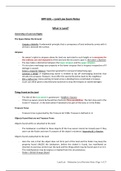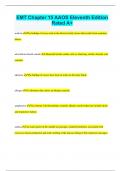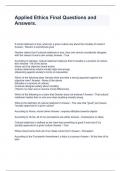Summary
Summary GDL Land Law Revision Notes 2020 (Distinction)
- Module
- Land Law
Notes on Land Law for the GDL at BPP University. These revision notes summarise key SGS course content in a way that is easy to understand and helped me achieve a Distinction.
[Show more]












